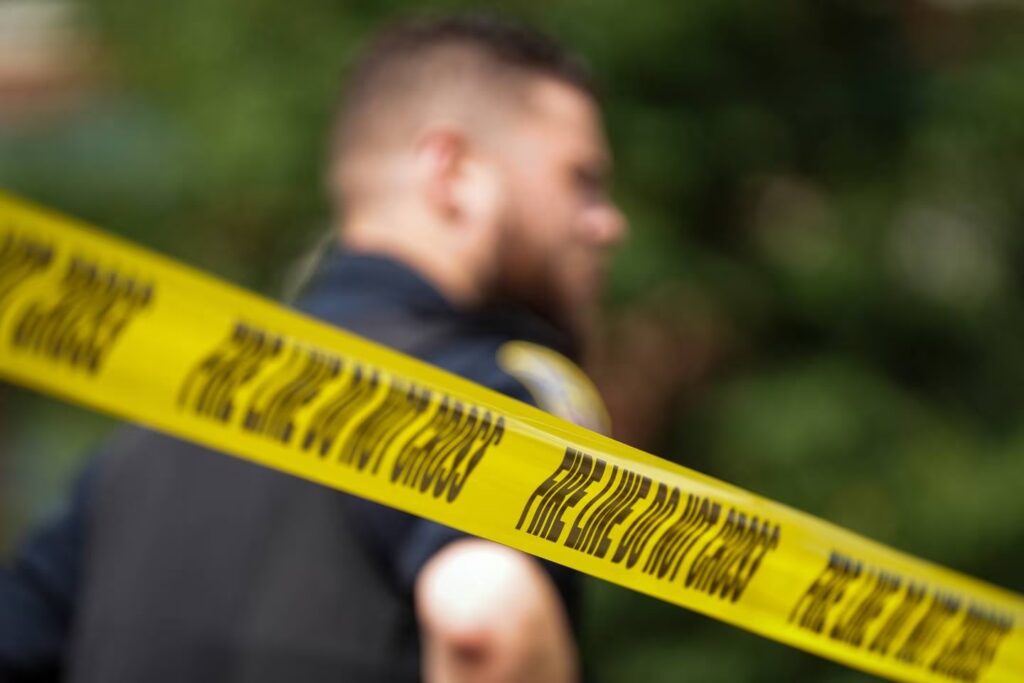Baltimore Police should spend less time in their vehicles and more time on the street, report says
By Ben Conarck
On August 15, 2023
Critical staffing shortages are preventing police from spending enough time getting to know the neighborhoods they patrol — a roadblock to regaining community trust, report finds

After decades of discriminatory policing eroded trust in scores of neighborhoods across the city, the Baltimore Police Department is continuing an uphill battle to establish good relationships with residents. But it has a long way to go, according to a recent report on the agency’s efforts to implement “community policing.”
The report, which was completed as part of the department’s federally mandated consent decree, found that staffing shortages “continue to be a barrier” in establishing community trust through more proactive policing efforts. The community policing philosophy is premised on the idea that officers form partnerships with community leaders to establish trust with residents. The hope is that trust will result in more cooperation to help police solve violent crimes.
But while the Police Department has made strides in training officers on community-oriented policies, actually putting them into practice has been a different story. For instance, the plan to have every beat officer regularly interact with their communities is still a long way from being realistic, the report by the monitoring team found.
“BPD will not be able to fulfill these requirements until it finds a way to free officer time to conduct meaningful community engagement … and to measure that this engagement is having the intended outcomes,” the report said.
One oft-cited metric in the report is the goal to have every officer spend 40% of their time “engaging in proactive community policing,” which essentially means walking the neighborhoods they patrol on foot and responding to concerns of residents. Instead, officers continue to spend too much of their time in their vehicles, and much of their time responding to calls, the monitoring team concluded.
“In many of Baltimore’s neighborhoods, mistrust in the police has traditionally run high,” the report said. “BPD has faced considerable challenges in engaging in effective community policing, especially in some of the city’s most underserved communities.”
There were challenges for the monitoring team in even gauging how the department is doing with its goals. The team attempted to survey officers about community engagement, but only 293 responded to at least one question, and not all of those who began the survey actually completed it.
The monitoring team also attempted to analyze dispatch data and 311 calls to determine how much time officers spent proactively policing their beats, but it was “not able to draw definitive conclusions from the data because for approximately 20% of calls, officers’ on-scene time was not recorded.”
As part of the department’s efforts to engage with community members, it created “neighborhood coordination officers,” who are tasked with leading efforts in each police district to address problems that come up in speaking with residents.
While those officers are active and known in the communities they serve, “beat officers generally are not,” the monitoring team concluded.
“A number of people we spoke to said that they thought foot patrol is an important part of proactive policing, but officers are spending noticeably more time patrolling in their vehicles than they do on foot patrols,” the report said.
Exacerbating that problem is the fact that most districts don’t have enough neighborhood coordination officers, the report noted, “and that the NCOs who are assigned are often deployed to other more acute patrol responsibilities.”
The report also looked at whether officers were addressing quality-of-life concerns “in a manner that minimizes stops, searches, citations and use of force as required by the consent decree. But the monitoring team said it was “not able to conduct this analysis because sufficient reliable data related to stops, searches, and arrests did not yet exist at the time of drafting this report.”
“However, BPD has been working diligently with the monitoring team to cure these data issues, such that the monitoring team intends to conduct this analysis in future assessments,” the report stated.
The assessment by the monitoring team was filed in court on the same day that The Baltimore Banner reported that the Police Department was falling behind on the requirement to publish annual reports on stop-and-search data as required by the consent decree. Legal experts noted that the timeline in Baltimore has been especially slow, and questioned why the judge overseeing the consent decree and the monitoring team have not been more critical of the delays.
This piece was republished from The Baltimore Banner.